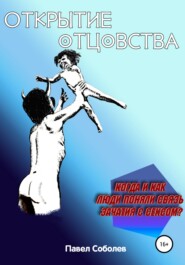По всем вопросам обращайтесь на: info@litportal.ru
(©) 2003-2025.
✖
Миф моногамии, семьи и мужчины: как рождалось мужское господство
Настройки чтения
Размер шрифта
Высота строк
Поля
Marriage and Cohabitation in the United States / Centers for Disease Control and Prevention, Vital and Health Statistics, Series 23, Number 28, February 2010.
Marlowe, F. W. (2003). The mating system of foragers in the Standard Cross-Cultural Sample. Cross-Cultural Research: The Journal of Comparative Social Science, 37(3), 282–306.
Martin, E. The Egg and the Sperm: How Science Has Constructed a Romance Based on Stereotypical Male-Female Roles / Journal of Women in Culture and Society 1991, vol. 16, no. 3 pp. 485–501.
Martin, P. S. (1966). Africa and Pleistocene overkill // Nature. 212 (5060): 339–342.
Mate G. Scattered Minds: A New Look at the Origins and Healing of Attention Deficit Disorder, Toronto, Ontario, Canada, A. A. Knopf Canada, 1999.
Maternal depression and child development // Paediatrics & Child Health. 2004 Oct; 9(8): 575–583 или https://www.ncbi.nlm.nih.gov/pmc/articles/PMC2724169/
McCubbin, H. I., Figley, C. R. (1983). Stress and the Family. Vol.1. Coping with Normative Transitions; Vol.2. Coping with Catastrophe – New York, Bruner/Mazel Publishers.
McLanahan, S. & Adams, J. (1989). The effects of children on adults’ psychological well-being. Social Forces, 68(1), 124–146.
Mech D. The Wolves of Minnesota. – Voyageur Press, 2003.
Meigs A. 1986. Blood, kin and food // Conformity and Conflict: Readings in Cultural Anthropology, ed. JP Spradley,DW McCurdy, – Boston: Little Brown Higher Education.
Meillassoux, С. Maidens, Meal and Money: Capitalism and the Domestic Community (Themes in the Social Sciences) – Cambridge: Cambridge University Press, 1981.
Mercer, R. T., & Ferketich, S. L. (1988). Stress and social support as predictors of anxiety and depression during pregnancy. Advances in Nursing Science, 10(2), 26–39.
Mercer, R. T., Ferketich, S. L., DeJoseph, J. F., May, K. A., & Sollid, D. (1988). Effect of stress on family functioning during pregnancy. Nursing Research, 37(5), 268–275
Meuwissen, I, Over, R. Habituation and dishabituation of female sexual arousal // Behaviour Research and Therapy, 1990;28(3): 217–26.
Montalban Lopez, R. “el oficio mas antiguo del mundo”. Prostitucion y explotacion sexual en la antigua Roma // Raudem: Revista de estudios de las mujeres, ISSN-e 2340–9630, № 4, 2016, p. 155–177.
Murdock, G.P. (1934). Our primitive contemporaries. – New York: Macmillan.
Musick K., Bumpass L. (2012). Reexamining the Case for Marriage: Union Formation and Changes in Well-being // Journal of Marriage and Family, Volume 74, Issue 1, pp. 1–18.
Myrskyla, M., & Margolis, R. (2014). Happiness: Before and After the Kids. Demography, 51(5), 1843–1866.
Nachmias, M., et al. “Behavioral Inhibition and Stress Reactivity: Moderating Role of Attachment Security.” Child Dev 67 (1996): 508–22.
Nattrass, S., Croft, D. P., Ellis, S. et al. (2019). Postreproductive killer whale grandmothers improve the survival of their grandoffspring // Proceedings of the National Academy of Sciences Dec 2019, 116 (52) 26669–26673.
Ni Chonaill, B. Child-centred law in medieval Ireland. In: Davis, R. and Dunne, T. (eds.) The Empty Throne: Childhood and the Crisis of Modernity. Cambridge University Press. (In Press). 2008.
Ninio A., Rinott N. Father’s Involvement in the Care of Their Infant’s and Their Attribution’s of Cognitive Competence to Ifants. // Child Development, 1988, 59: 652–663.
Nolen-Hoeksema S. (1990). Sex differences in depression. – Stanford, CA: Stanford University Press.
Oliver-Williams, C. The association between parity and subsequent cardiovascular disease in women: the atherosclerosis risk in communities (ARIC) study (presented 4 June 2018 at the British Cardiovascular Society Conference)
O'Brien, M., & Peyton, V. (2002). Parenting attitudes and marital intimacy: A longitudinal analysis. Journal of Family Psychology, 16(2), 118–127.
O'Donohue, W., Geer, J. H. (1985). The Habituation of Sexual Arousal // Archives of Sexual Behaviour, 14(3): 233–46
O'Donohue, W., Plaud, J. J. The long-term habituation of sexual arousal in the human male // Journal of Behavior Therapy and Experimental Psychiatry, 1991 Jun;22(2): 87–96.
Ortner, S. 1974. Is female to male as nature is to culture? // Woman, culture, and society. M. Z. Rosaldo and L. Lamphere (eds), – Stanford, CA: Stanford University Press, pp. 68–87.
Pagel, M., Meade, A. (2006). Bayesian Analysis of Correlated Evolution of Discrete Characters by Reversible-Jump Markov Chain Monte Carlo. The American Naturalist, 167(6), 808–825.
Palombit, R. A. (1994a). Dynamic pair bonds in hylobatids: Implications regarding monogamous social systems. Behaviour 128:65–101.
Palombit, R. A. (1994b). Extra-pair copulations in a monogamous ape. Animal Behaviour 47:721–723.
Parke R. D., Sawin D. B. The Father’s Role in Infancy: A Re-Evaluation // The Family Coordinator, 1976, vol.25, 365 p.
Pawlowski, B. (1999). Loss of Oestrus and Concealed Ovulation in Human Evolution: the Case against the Sexual-Selection Hypothesis // Current Anthropology. 40 (3): 257–276.
Payen, J-Ch. La crise du mariage a la fin du XIIIe siecle d'apres la litterature francaise du temps. In: Famille et parente dans l'Occident medieval. Actes du colloque de Paris (6–8 juin 1974) Rome: Ecole Francaise de Rome, 1977. pp. 413–426.
Payne, K. K. (2015). The Remarriage Rate: Geographic Variation, 2013. (FP-15–08). National Center for Family and Marriage Research.
Peen, J. and Dekker, J. (1997) Admission rates for schizophrenia in the Netherlands. Acta Psychiatrica Scandinavica 96: 301–5.
Pedersen, C. and Mortensen, P. (2001). Urbanization and schizophrenia. Schizophrenia Research (suppl. 41): 65–6.
Perales F., Baxter J. (2017). Sexual Identity and Relationship Quality in Australia and the United Kingdom // Family Relations,Volume 67, Issue 1, pp. 55–69.
Piccinelli M., Wilkinson G. (2000). Gender differences in depression // British Journal of Psychiatry, 177, 486–492.
Pilot, M., Dahlheim, M. E., Hoelzel A. R. (2010). Social cohesion among kin, gene flow without dispersal and the evolution of population genetic structure in the killer whale (Orcinus orca) // Jurnal of Evolutionary Biology, volume 23, issue 1, pp. 20–31.
Pinquart, M. (2003). Loneliness in married, widowed, divorced, and never-married older adults // Journal of Social and Personal Relationships, 20(1), 31–53.
Pinquart, M., & Sorensen, S. (2000). Influences of socioeconomic status, social network, and competence on subjective well-being in later life: A meta-analysis. Psychology and Aging, 15, 187–224.
Pleshkova N. L., Muhamedrahimov R. J. Quality of attachment in St Petersburg (Russian Federation): A sample of family-reared infants // Clinical Child Psychology and Psychiatry, 2010, Vol. 15,3. Pp. 361–372.
Ploubidis, G. B., Silverwood, R. J., DeStavola, B., & Grundy, E. (2015). Life-Course Partnership Status and Biomarkers in Midlife: Evidence From the 1958 British Birth Cohort // American Journal of Public Health. August; 105(8): 1596–1603.
Potter, B., Irish, J., Reuther, J. and McKinney, H. New insights into Eastern Beringian mortuary behavior: A terminal Pleistocene double infant burial at Upward Sun River // PNAS December 2, 2014 111 (48) 17060-17065.
Powdthavee, N., Vignoles, A. (2008) Mental Health of Parents and Life Satisfaction of Children: A Within-Family Analysis of Intergenerational Transmission of Well-Being // Social Indicators Research, 88(3), 397–422.
Power, C. Hadza gender rituals – epeme and maitoko – considered as counterparts // Hunter Gatherer Research (2015), 1, (3), 333–358.
Power, C., Watts, I. The Woman With The Zebra's Penis Gender, Mutability And Performance // Journal of the Royal Anthropological Institute, 1997, Vol. 3 Issue 3, p 537–560.
Pradhan, G. R., et al. The evolution of female copulation calls in primates: A review and a new model // Behavioral Ecology and Sociobiology. 2006. № 59(3). Pp. 333–343.
Profet, M. (1993). Menstruation as a defense against pathogens transported by sperm // The Quarterly Review of Biology, 68(3): 335–86.
Marlowe, F. W. (2003). The mating system of foragers in the Standard Cross-Cultural Sample. Cross-Cultural Research: The Journal of Comparative Social Science, 37(3), 282–306.
Martin, E. The Egg and the Sperm: How Science Has Constructed a Romance Based on Stereotypical Male-Female Roles / Journal of Women in Culture and Society 1991, vol. 16, no. 3 pp. 485–501.
Martin, P. S. (1966). Africa and Pleistocene overkill // Nature. 212 (5060): 339–342.
Mate G. Scattered Minds: A New Look at the Origins and Healing of Attention Deficit Disorder, Toronto, Ontario, Canada, A. A. Knopf Canada, 1999.
Maternal depression and child development // Paediatrics & Child Health. 2004 Oct; 9(8): 575–583 или https://www.ncbi.nlm.nih.gov/pmc/articles/PMC2724169/
McCubbin, H. I., Figley, C. R. (1983). Stress and the Family. Vol.1. Coping with Normative Transitions; Vol.2. Coping with Catastrophe – New York, Bruner/Mazel Publishers.
McLanahan, S. & Adams, J. (1989). The effects of children on adults’ psychological well-being. Social Forces, 68(1), 124–146.
Mech D. The Wolves of Minnesota. – Voyageur Press, 2003.
Meigs A. 1986. Blood, kin and food // Conformity and Conflict: Readings in Cultural Anthropology, ed. JP Spradley,DW McCurdy, – Boston: Little Brown Higher Education.
Meillassoux, С. Maidens, Meal and Money: Capitalism and the Domestic Community (Themes in the Social Sciences) – Cambridge: Cambridge University Press, 1981.
Mercer, R. T., & Ferketich, S. L. (1988). Stress and social support as predictors of anxiety and depression during pregnancy. Advances in Nursing Science, 10(2), 26–39.
Mercer, R. T., Ferketich, S. L., DeJoseph, J. F., May, K. A., & Sollid, D. (1988). Effect of stress on family functioning during pregnancy. Nursing Research, 37(5), 268–275
Meuwissen, I, Over, R. Habituation and dishabituation of female sexual arousal // Behaviour Research and Therapy, 1990;28(3): 217–26.
Montalban Lopez, R. “el oficio mas antiguo del mundo”. Prostitucion y explotacion sexual en la antigua Roma // Raudem: Revista de estudios de las mujeres, ISSN-e 2340–9630, № 4, 2016, p. 155–177.
Murdock, G.P. (1934). Our primitive contemporaries. – New York: Macmillan.
Musick K., Bumpass L. (2012). Reexamining the Case for Marriage: Union Formation and Changes in Well-being // Journal of Marriage and Family, Volume 74, Issue 1, pp. 1–18.
Myrskyla, M., & Margolis, R. (2014). Happiness: Before and After the Kids. Demography, 51(5), 1843–1866.
Nachmias, M., et al. “Behavioral Inhibition and Stress Reactivity: Moderating Role of Attachment Security.” Child Dev 67 (1996): 508–22.
Nattrass, S., Croft, D. P., Ellis, S. et al. (2019). Postreproductive killer whale grandmothers improve the survival of their grandoffspring // Proceedings of the National Academy of Sciences Dec 2019, 116 (52) 26669–26673.
Ni Chonaill, B. Child-centred law in medieval Ireland. In: Davis, R. and Dunne, T. (eds.) The Empty Throne: Childhood and the Crisis of Modernity. Cambridge University Press. (In Press). 2008.
Ninio A., Rinott N. Father’s Involvement in the Care of Their Infant’s and Their Attribution’s of Cognitive Competence to Ifants. // Child Development, 1988, 59: 652–663.
Nolen-Hoeksema S. (1990). Sex differences in depression. – Stanford, CA: Stanford University Press.
Oliver-Williams, C. The association between parity and subsequent cardiovascular disease in women: the atherosclerosis risk in communities (ARIC) study (presented 4 June 2018 at the British Cardiovascular Society Conference)
O'Brien, M., & Peyton, V. (2002). Parenting attitudes and marital intimacy: A longitudinal analysis. Journal of Family Psychology, 16(2), 118–127.
O'Donohue, W., Geer, J. H. (1985). The Habituation of Sexual Arousal // Archives of Sexual Behaviour, 14(3): 233–46
O'Donohue, W., Plaud, J. J. The long-term habituation of sexual arousal in the human male // Journal of Behavior Therapy and Experimental Psychiatry, 1991 Jun;22(2): 87–96.
Ortner, S. 1974. Is female to male as nature is to culture? // Woman, culture, and society. M. Z. Rosaldo and L. Lamphere (eds), – Stanford, CA: Stanford University Press, pp. 68–87.
Pagel, M., Meade, A. (2006). Bayesian Analysis of Correlated Evolution of Discrete Characters by Reversible-Jump Markov Chain Monte Carlo. The American Naturalist, 167(6), 808–825.
Palombit, R. A. (1994a). Dynamic pair bonds in hylobatids: Implications regarding monogamous social systems. Behaviour 128:65–101.
Palombit, R. A. (1994b). Extra-pair copulations in a monogamous ape. Animal Behaviour 47:721–723.
Parke R. D., Sawin D. B. The Father’s Role in Infancy: A Re-Evaluation // The Family Coordinator, 1976, vol.25, 365 p.
Pawlowski, B. (1999). Loss of Oestrus and Concealed Ovulation in Human Evolution: the Case against the Sexual-Selection Hypothesis // Current Anthropology. 40 (3): 257–276.
Payen, J-Ch. La crise du mariage a la fin du XIIIe siecle d'apres la litterature francaise du temps. In: Famille et parente dans l'Occident medieval. Actes du colloque de Paris (6–8 juin 1974) Rome: Ecole Francaise de Rome, 1977. pp. 413–426.
Payne, K. K. (2015). The Remarriage Rate: Geographic Variation, 2013. (FP-15–08). National Center for Family and Marriage Research.
Peen, J. and Dekker, J. (1997) Admission rates for schizophrenia in the Netherlands. Acta Psychiatrica Scandinavica 96: 301–5.
Pedersen, C. and Mortensen, P. (2001). Urbanization and schizophrenia. Schizophrenia Research (suppl. 41): 65–6.
Perales F., Baxter J. (2017). Sexual Identity and Relationship Quality in Australia and the United Kingdom // Family Relations,Volume 67, Issue 1, pp. 55–69.
Piccinelli M., Wilkinson G. (2000). Gender differences in depression // British Journal of Psychiatry, 177, 486–492.
Pilot, M., Dahlheim, M. E., Hoelzel A. R. (2010). Social cohesion among kin, gene flow without dispersal and the evolution of population genetic structure in the killer whale (Orcinus orca) // Jurnal of Evolutionary Biology, volume 23, issue 1, pp. 20–31.
Pinquart, M. (2003). Loneliness in married, widowed, divorced, and never-married older adults // Journal of Social and Personal Relationships, 20(1), 31–53.
Pinquart, M., & Sorensen, S. (2000). Influences of socioeconomic status, social network, and competence on subjective well-being in later life: A meta-analysis. Psychology and Aging, 15, 187–224.
Pleshkova N. L., Muhamedrahimov R. J. Quality of attachment in St Petersburg (Russian Federation): A sample of family-reared infants // Clinical Child Psychology and Psychiatry, 2010, Vol. 15,3. Pp. 361–372.
Ploubidis, G. B., Silverwood, R. J., DeStavola, B., & Grundy, E. (2015). Life-Course Partnership Status and Biomarkers in Midlife: Evidence From the 1958 British Birth Cohort // American Journal of Public Health. August; 105(8): 1596–1603.
Potter, B., Irish, J., Reuther, J. and McKinney, H. New insights into Eastern Beringian mortuary behavior: A terminal Pleistocene double infant burial at Upward Sun River // PNAS December 2, 2014 111 (48) 17060-17065.
Powdthavee, N., Vignoles, A. (2008) Mental Health of Parents and Life Satisfaction of Children: A Within-Family Analysis of Intergenerational Transmission of Well-Being // Social Indicators Research, 88(3), 397–422.
Power, C. Hadza gender rituals – epeme and maitoko – considered as counterparts // Hunter Gatherer Research (2015), 1, (3), 333–358.
Power, C., Watts, I. The Woman With The Zebra's Penis Gender, Mutability And Performance // Journal of the Royal Anthropological Institute, 1997, Vol. 3 Issue 3, p 537–560.
Pradhan, G. R., et al. The evolution of female copulation calls in primates: A review and a new model // Behavioral Ecology and Sociobiology. 2006. № 59(3). Pp. 333–343.
Profet, M. (1993). Menstruation as a defense against pathogens transported by sperm // The Quarterly Review of Biology, 68(3): 335–86.











